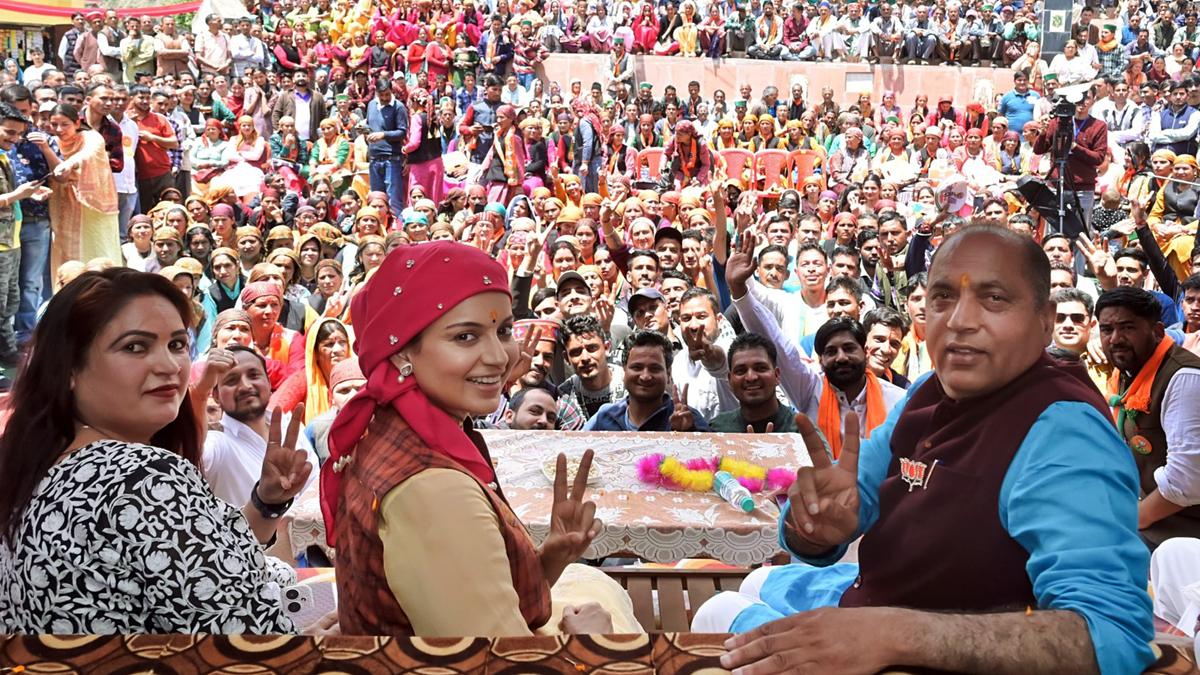Prime Minister Modi spoke quite mischievously about the principle Opposition party snatching the mangalsutra (a metaphor for people’s wealth) of women and redistributing the same to "infiltrators" (clearly intending Muslims). The Election Commission of India (ECI) is reluctantly examining whether he violated the Model Code of Conduct or not.
The comment, however, has a good side effect. It has generated considerable debate on an issue of important public concern — wealth creation and its redistribution, though the Prime Minister raised it in the context of elections emphasising its populist undertones.
Wealth Indicates National Economic Prosperity
The production of goods and services and their consumption (more commonly known as the GDP) is the primary source of value addition, income, and wealth in any economy and society.
All income or GDP generated in a year is not spent on consumption. The proportion of income saved and invested into capital formation builds the capital or wealth of households, enterprises, and the nation. The larger the investment, the larger the GDP growth and the larger the formation of wealth.
The build-up of national wealth is necessary for national prosperity. Governments, therefore, need to pursue all policies which promote GDP growth and wealth creation.
The GDP/income, by the operation of the economic system, gets divided into three principal constituents:
Households and individuals (primarily as labour income)
Capital and enterprise (primarily as distributed dividends/interest and retained profits)
Government (primarily as taxes)
Income distribution is not equitable but is not quite lop-sided either.
Such an unequal distribution of wealth is not in the real interest of the people and the nation. Governments, therefore, need to make sure that the wealth of the nation is distributed to serve the wider interests of the economy and people.
Wealth and Inequality Have Grown Enormously
It is the wealth owned by individuals and households that matter. Corporate wealth as such, does not matter, as it is indirectly owned by the individuals and households.
Indian statistical agencies do not collect data about individual and household wealth in India. A few global banking and wealth-tracking institutions do for the world and also for India.
The Global Wealth Report (GWR), brought out by the UBS/Credit Suisse, measures global/national wealth. The GWR has been providing wealth estimates consistently for about two decades now.
The GWR defines wealth as the value of financial assets (equity assets and debt principally) plus real estate assets (primarily housing) owned by the adults in a country minus the debts they owe. For the sake of global uniformity, these wealth estimates are provided in US dollars.
India’s GDP was estimated at $3.39 trillion in 2022. India’s wealth, thus, was more than 450 percent of GDP and has been growing at rates higher than its GDP. It is expected to cross 500 per cent of GDP soon.
In terms of per-adult wealth, India is still relatively poor. India’s per adult wealth was estimated at $16,500 in 2022. However, the number of dollar millionaires is rising fast, as there were as many as 8.49 lakh dollar millionaires in 2022.
There is enormous wealth inequality in the world. The GWR informs that the wealth share of the top one per cent of adults was as high as 44.5 per cent in 2022 with an estimated 59.4 million dollar millionaires, a little more than one per cent of the global adult population. On the other hand, as many as 52.5 per cent of adults owned less than $10,000 of wealth.
Other studies also reflect similar trends. There is no escape from the conclusion that wealth concentration is accelerating at a fast rate in India, much faster than the concentration of incomes.
Let's Encourage and Celebrate Wealth Generation
The economic system of the Industrial Age deployed vast machines and automation to harness scale economies and enhance labour productivity. It made the industry highly competitive and produced quality goods at cheaper prices. While this reduced employment in factories, the consumers loved cheaper and better quality products which generated an enormous welfare effect.
The operation of a large factory system led to a higher concentration of incomes in owners of capital, CEOs, and senior owner-managers. The labour incomes also rose but at relatively lower rates. Organised labour was better off despite income inequality expanding.
It has been quite convincingly argued that the digital economy feeds on network effects, and the best productivity and efficiency can be generated in these highly concentrated operations. So many of the top digital companies do not charge for their services and earn their income from advertisement revenues and unbelievable valuations.
Industrial machination and automation provided people with good quality products at cheaper costs. Digital companies have provided people with high-quality services at literally no cost.
Indian companies and entrepreneurs will have to invest in building collaborative (Indian companies do not own up technology) and competitive businesses if they have to have any chance of building good digital and environmental businesses. Only the companies with real capital and wealth muscle will be able to do it.
We will have to facilitate the path of these wealthy entrepreneurs instead of eying their wealth. This can be done only when we have the mindset of celebrating the enterprise and wealth.
Time to Initiate Wealth Taxation
For most of the human societal existence, incomes were not taxed. It was primarily the production and sales of agricultural and industrial produce and imports, which were taxed.
The industrial revolution expanded the incomes of the few, massively generating gross inequality in the world.
Progressive taxation of income and its redistribution through social welfare programmes is now globally accepted as a sound public policy.
India also has a fair and progressive structure of income-tax rates and elaborate programmes of social security, welfare and also some pure cash redistribution or freebies.
The taxation of income and its redistribution is well accepted by society and it does not generate any outrage. It is the wealth which is not taxed in India. India had a moth-eaten wealth tax system, which was also abolished in 2015 by the Modi-led BJP government.
Wealth Taxation is a Fair Deal
The prime Minister spoke in a manner as if taxation and redistribution of wealth is something of a horrible thing. He perhaps intended to generate outrage amongst people in general, and the wealthier middle class in particular.
This is a short-sighted approach.
As the moment for taxing incomes (that too progressively) came about a hundred years back, the moment to initiate the taxation of wealth is right here now.
The operation of the economic system is likely to render more and more people without jobs. Nothing inherently bad. However, the new paradigm would require the consumption of the non-earning sections of people to be taken care of.
This can be done by way of implementing a new-age social welfare scheme, i.e., a well-designed universal basic income for non-earning people.
Taxation of Wealth Will Not Hurt Wealth Creation
The taxation of wealth is not the expropriation of wealth, just as how the taxation of income is not the expropriation of income.
Such a system would allow the capital/wealth of India to be deployed for building prosperity and at the same time make its contribution to creating a healthy and humane society.
(The author is the former Economic Affairs Secretary and Finance Secretary of India. This is an opinion piece and the views expressed above are the author’s own. The Quint neither endorses nor is responsible for the same.)
(At The Quint, we are answerable only to our audience. Play an active role in shaping our journalism by becoming a member. Because the truth is worth it.)

 1 week ago
104
1 week ago
104



